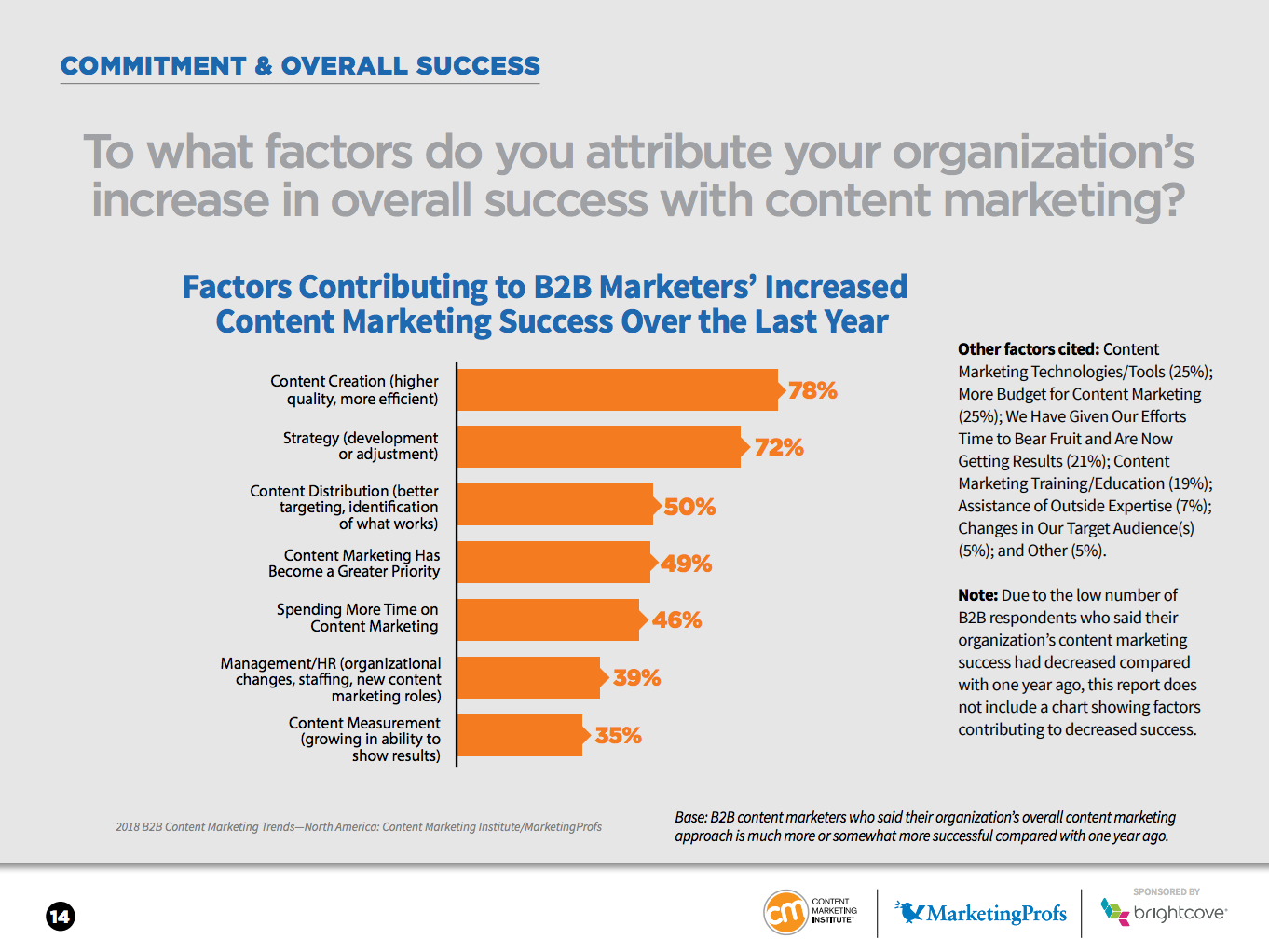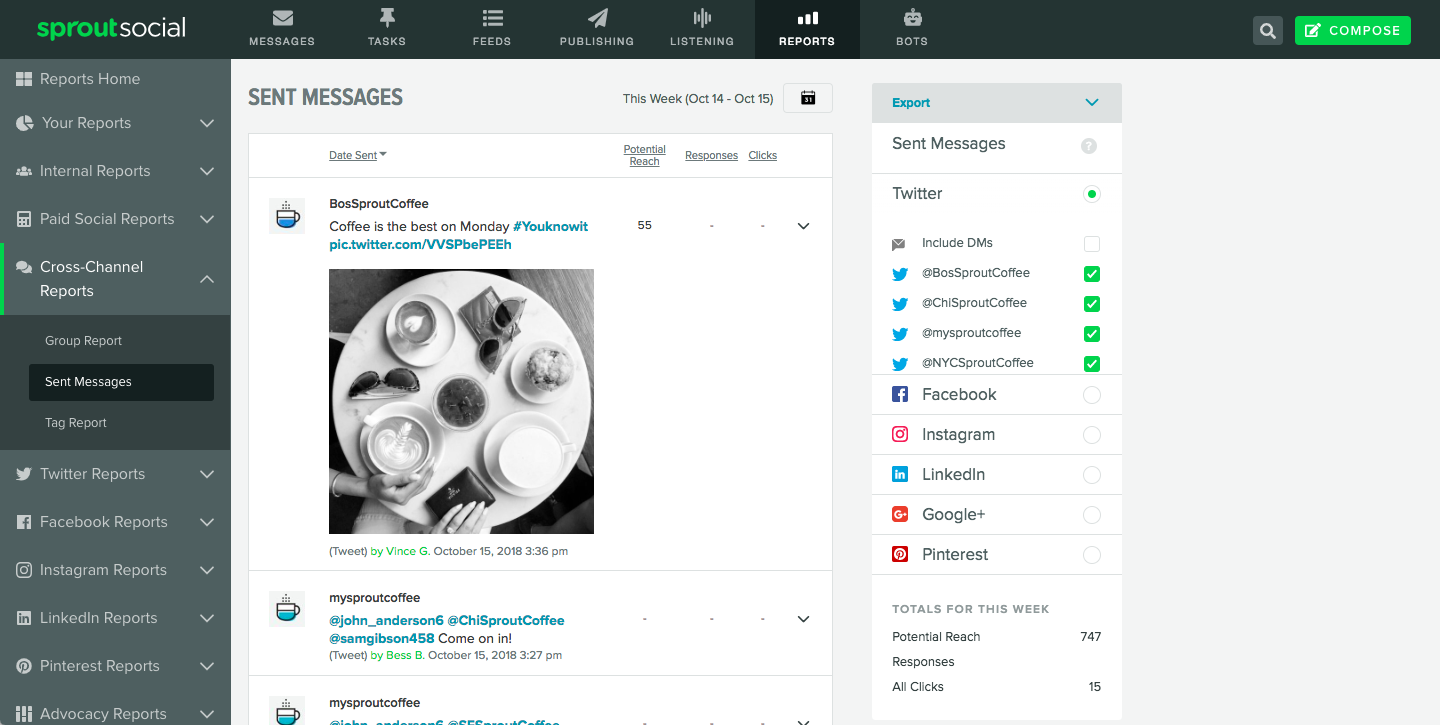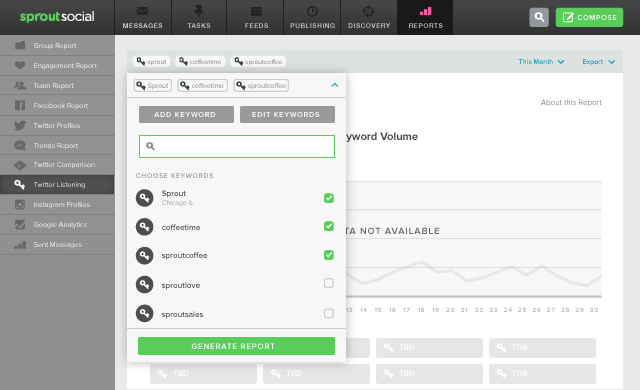Gone are the days where content means the blog posts your company writes. Instead, content marketing now includes a diverse set of content types and multiple channels to push them through.
Chances are that if you’re already using social media, then you are doing content marketing to some extent. The next step is to get a strategy in place. This guide will walk you through why having a content marketing strategy is important and different ways you can get started on your own.
What is content marketing?
To begin with, content marketing is taking any type of content (digital or physical) and purposefully sending it out to your audience. Adding a strategy to this means that you’ve thought about your goals, audiences and distribution channels.
A typical content marketing plan will answer the below questions:
- Who is your audience? These are usually based on market segments and certain types of content will target specific segments.
- What channels will you use?
- What metrics will you use to measure success and ROI?
- What resources do you have?
- What pain points will you solve?
In this example, Mailchimp created a multi-media case study in a post and then repurposed the video for a LinkedIn post. It goes through how custom email templates were used to increase sales: a tactic that is useful for many businesses.
Types of content
There are quite a few types of content out there now with new channels being developed every year. Part of being a good content marketer is being able to learn new types and be open to experimentation. Relatively new to the scene is user-generated social media content that can be used as part of your strategy.
Here’s a non-exhaustive list to help you think about what type of content your company has access to:
- Company blog posts
- Branded blog posts
- User-generated content like an Instagram post
- Videos
- Podcasts
- Whitepapers
- Case studies
- Infographics
- Photos
- Webinars
- Quizzes
- Press releases
- News and magazine articles

The Sprout Resources page gives you a few different content types to explore. This information is readily available on our website but is also regularly distributed and promoted through social media channels.
Types of channels
How will you get the word out about your content? You can publish all the white papers you want but no one will see them if you’re not talking about them. For some channels, the line between content and channel blurs. For example, email newsletters are an excellent way of promoting your branded content. But, some brands also include unique content in the newsletter’s body. There is no right or wrong way to approach this. If you find that mixing it up works for your company, then go ahead and do it.
Some common channels include:
- Social media
- Pamphlets
- Search engine ads
- Website

The most common channel is email, with 82% of marketers reporting it as the most effective. This is not-so-closely followed by social media at 54% and website/blog at 51%.
What does this mean for you? If you’re just starting out, use this as a jumping point on where to focus your beginning efforts. Start with one or two channels and expand as you feel more comfortable.
What resources are available?
Before you start diving into all of the content possibilities, take a step back and look at what resources you have available to you. Are you a marketing team of one or ten? What skill sets are already on your team? Does your marketing budget have room to hire a professional content creator?
You shouldn’t get into producing videos if you don’t have the available skills nor the budget for a videographer. Keep in mind that time is also a resource. New content types take time to learn, experiment with and create.
Next, think about who can generate this content. Don’t limit it to only the marketing team. Your sales and support teams will know what pains the customer or business goes through, too. All of the departments should have some content ideas that can be developed.
Develop your content marketing strategy
There are many ways to get started in developing your strategy. Here, we’ll offer three ways to get started. It’s possible that you’ve done some of this work already. In that case, repurpose your previous research and put it to use here.
1. Define your goals & metrics
The start of any new strategy begins with knowing what goals you have in mind. In content marketing, multiple goals are common and are often matched with content types and channels. And for each goal, you’ll need to define metrics that are used to measure success.
For example, one of your content marketing goals may be to increase your trial signups. To do this, you’d plan on creating case studies that will be published on your website and shared via social media. The case study includes text, photos, a downloadable PDF and video. Your sales team will use the link to share success studies with potential clients and your social media team will use the different media formats to repeatedly promote the case study.

This content matrix from Ninetyblack provides a graphical guide to where content can fall. The matrix may look different for your business. Quizzes are usually designed to be entertaining and can be a useful way to spread brand awareness.
2. Audit your current content
What’s working for you now? If you already have some branded content, conduct a content audit to help you understand what has and hasn’t been successful. The audit should include the actual content links and distribution channels.
Perhaps you’ve produced a few videos but they’ve only been published to YouTube. You’ve found that the audience is receptive to the videos. At this point, you may notice that a few videos have call-to-action links in the captions that lead back to your website. These videos not only were watched but people clicked on them to learn more. This discovery could potentially lead you to add more links into your captions for more cross-channel promotions. If you’re curious on how videos on social perform, we have a helpful guide here.

In a Content Marketing Institute’s 2018 trends report, B2B marketers credited content creation and strategy as the top two factors in their content marketing success. Note that for content creation, it’s specified to be higher quality and more efficient. Low-quality content doesn’t cut it anymore especially if your competition is also focused on content marketing. For more tips on creating B2B content, read through our B2B content marketing guide.

If your content was mostly pushed through social media channels, performing a social media audit may be beneficial to you. This way, you can see what type of content performed well and duplicate the similarities.
3. Map your customer journey
Certain types of content work best at points of a customer journey. A helpful product troubleshooting video won’t be as interesting to a potential customer in the awareness phase as it is for someone who has already purchased. Being aware that it exists, however, may help move the decision along.

This Boston Interactive checklist shows the various content types that match a customer’s purchase phase.
Remember, though, that a customer’s journey doesn’t end at the purchase. Past the purchase point, there’s still retention and support that need content marketing, too.

Bright Vessel illustrates their version of a customer journey map, indicating where each department plays a role. This exercise makes you reflect on every customer touchpoint.
Mapping this for your brand helps you understand where your content can be best served. Once you have the map down, then your content can be further tweaked and adjusted to reflect your audience and their journey status.
Implement & review your content marketing strategy
Now that you have three ways to brainstorm your strategy, the next steps are to document and implement it. With documentation, you’ll have a way to reference and steer your future content. If your strategy was to promote your blog posts on both social media and email newsletters but you find that newsletters are receiving a lot of engagement, you may look into increasing the send frequency or creating a subscriber list for only the blog.
Many content marketing calendars are overviews of content that’s planned for the year. They’ll often list the content, type, audience, customer phase and distribution channel(s), along with the publishing dates. This all-in-one calendar type is helpful for big picture planning.
Once you’ve drawn up the calendar, you’ll still need to listen and distribute it, and this is where social media plays a big role. A social media-minded content marketing strategy incorporates both social monitoring and publishing.

Sprout helps with both of these objectives. Through the calendar feature, you can see when content is distributed and across which channels. For well-performing posts, Sprout makes it easy to republish the content with just a few clicks.

To monitor the topics your audience cares about, you use branded keywords and search options to see who’s talking about you and to curate content for redistribution. Content marketing doesn’t have to only include branded content. It also includes content that’s published about you or industry-adjacent news. Searching for topics in your industry in Sprout helps you easily identify & curate the content that your audience cares about.
In the end, content marketing strategies vary from business to business. The advice given here is meant to be a framework to begin your content marketing strategy, not as set-in-stone rules. As you begin this journey, you’ll find that some strategies or content don’t work for you and that’s okay. Having both defined goals and a plan in hand will go a long way in starting your strategy.